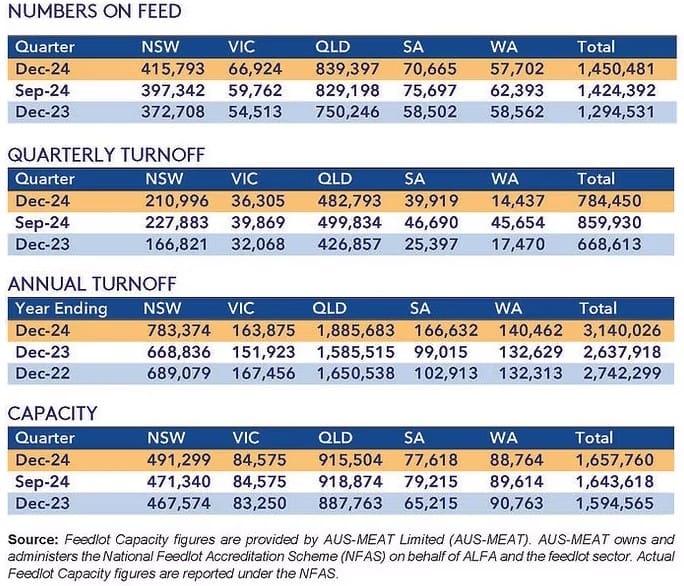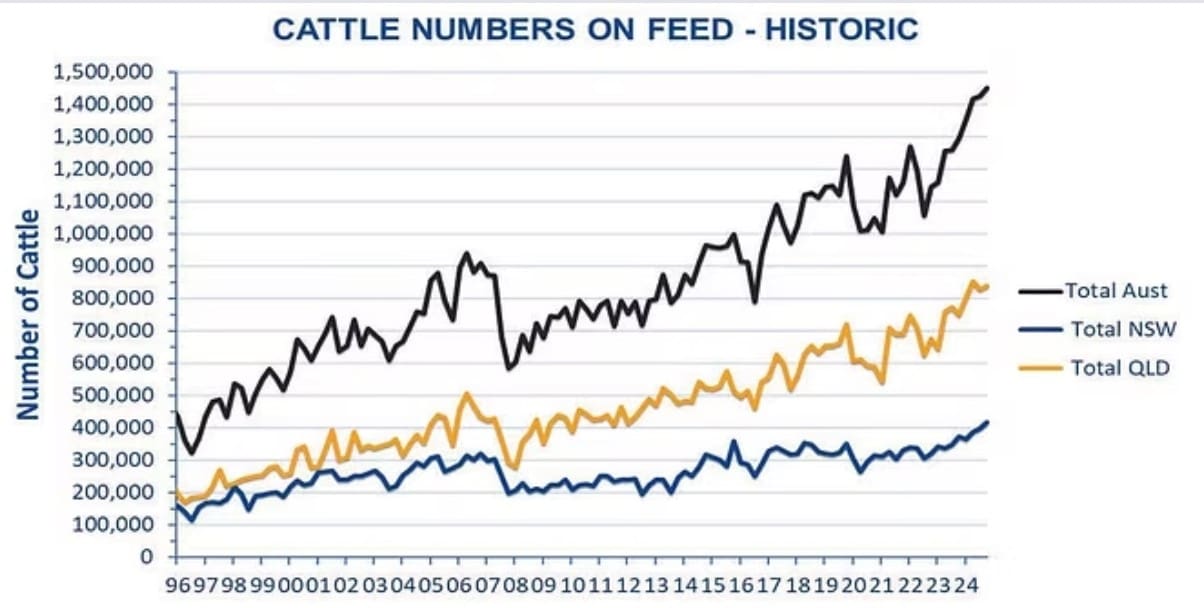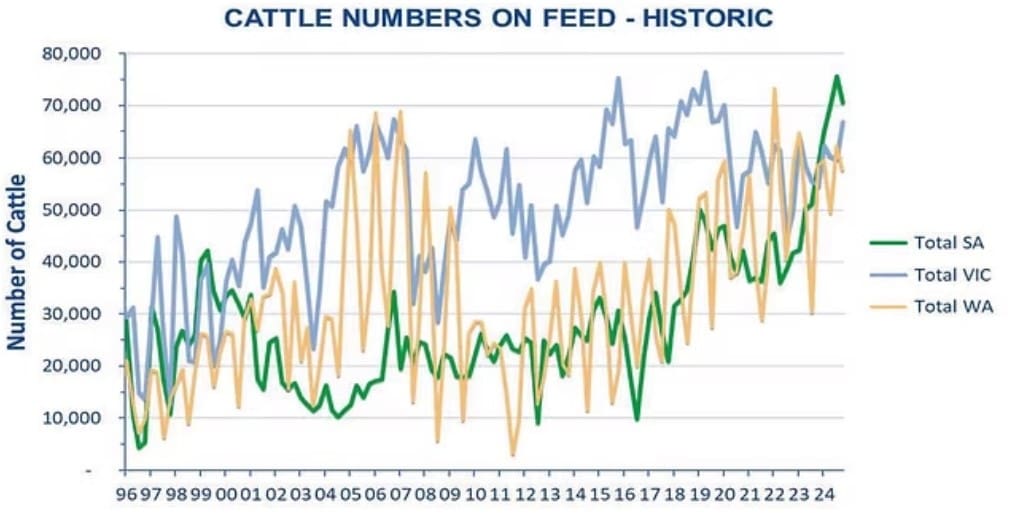NUMBERS of cattle on feed across Australia have continued their two year surge, hitting 1.45 million head in the December quarter, latest survey data released this morning by the Australian Lot Feeders Association and Meat & Livestock Australia shows.
Numbers hit 1,450,481 head last quarter, up another 26,000 head or 1.8pc on the previous record set last September, and 156,000 head more than this time last year.
Feedlot capacity has also continued to expand, hitting a new record 1.657 million head, up 63,000 on this time a year ago. Utilisation (occupancy) levels remained high in December, at 87.5 percent.
The latest survey released this morning has confirmed 2024 as the largest calendar year for grain fed beef on record.

ALFA President, Grant Garey, said that the data collected from feedlots across the country had shown continued growth thanks to a high supply of cattle and strong global demand for Australian grain fed beef.
“Investment in the sector has driven an additional 14,142 hd of feedlot capacity coming online under the National Feedlot Accreditation Scheme, lifting capacity to 1.65m, solidifying a strong close to 2024,” Mr Garey said.
“Persistent dry conditions across southern states have highlighted the benefits from a grain fed production system which have influenced a lift across all major lot feeding states, and a 2% national increase in numbers on feed to 1,450,481 head with pen utilisation up to 87.5%.
“Stable trading conditions have enabled feedlots to be consistent with replacing turned-off cattle, keeping pen utilisation steady.
Four quarters of strong feedlot turnoff has produced record volumes, with 3,140,026 head exiting feedlots over the 2024 calendar year.
“This is the largest calendar-year turnoff on record and only the second time the annual turnoff hit over 3 million, showing how firm the supply of Australian grain fed beef has been.”

Erin Lukey, MLA’s Senior Market Information Analyst, confirmed that Australian beef has been entering a buoyant market.
“In a time when Australia is producing near-record beef, we have seen constriction of beef production from some of our competitors, ensuring strong avenues into new and old markets,” Ms Lukey said.
“We are exporting record volumes of all beef, but importantly, the grain fed proportion of that has kept up with demand.”

Over the past 12 months, Australia exported 375,195 tonnes of grain fed beef into a changing market share.
For the first time on record, China was our most significant market for grain fed exports, taking 29% of volume at 28,624 in Q4. A dramatic 22% reduction in exports to Japan enabled China to take this top market share.
China is a frozen-focused market, while Japan imports mainly chilled beef.
This market share shift can be attributed to a levelling of the Japanese market after three-quarters of dramatic import peaks accompanying consistent growth in China.
The Australian herd is past its cyclical peak, though remains productive. The availability of feeder cattle in 2024 was up 25% compared to the previous year, with over 620,000 feeder steers flowing through the National Livestock Reporting Service Feeder Steer Indicator.
“Dry conditions across southern states have inflated the availability of feeder steers. As cattle are turned off in dry regions, grass-fed finishing may not be available, hence a reliance on grain to reach finished weights.”
“Looking at quarterly averages, 2024 steer prices finished around 3% below the previous quarter to 347¢/kg, while Darling Downs wheat prices dipped 6% to $332. A downward trend in both primary inputs reflects the enthusiasm of lot feeders,” Ms Lukey said.

HAVE YOUR SAY